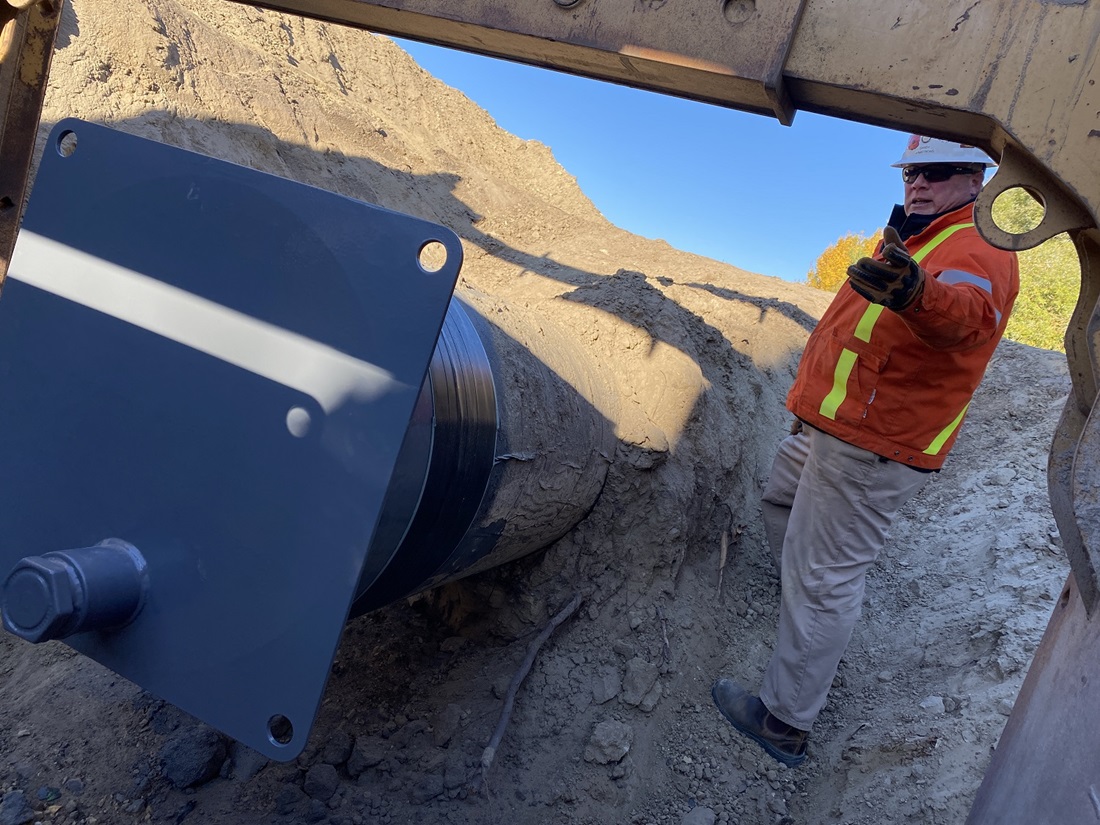
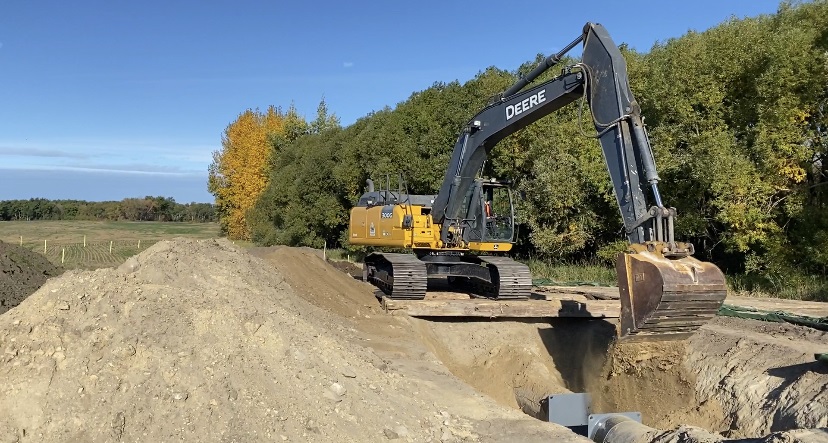
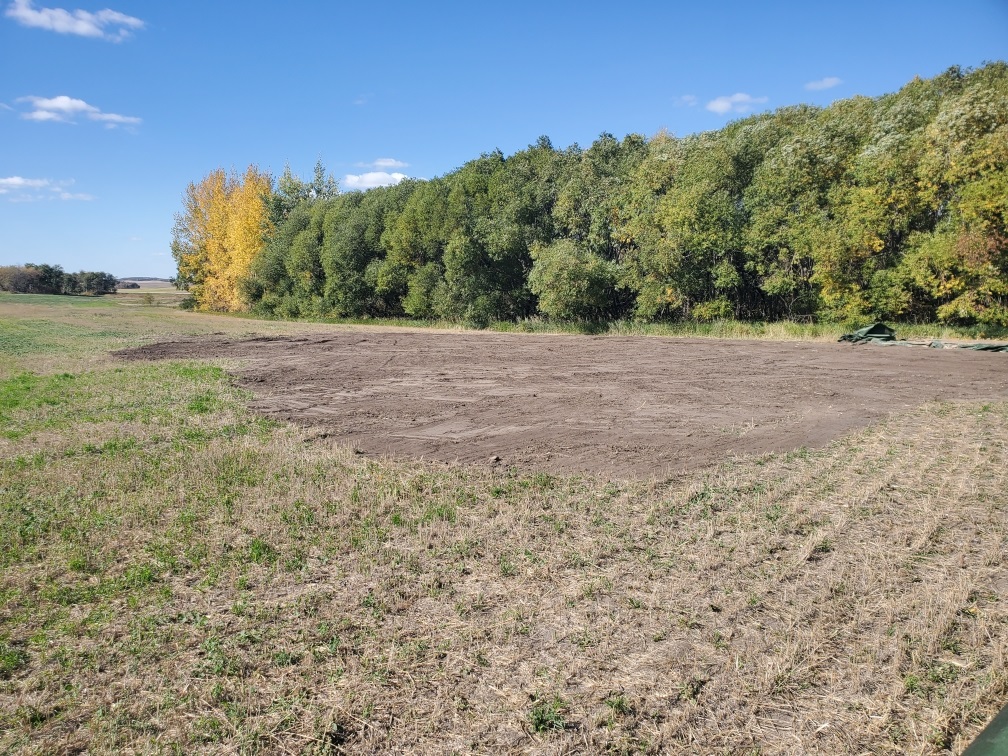
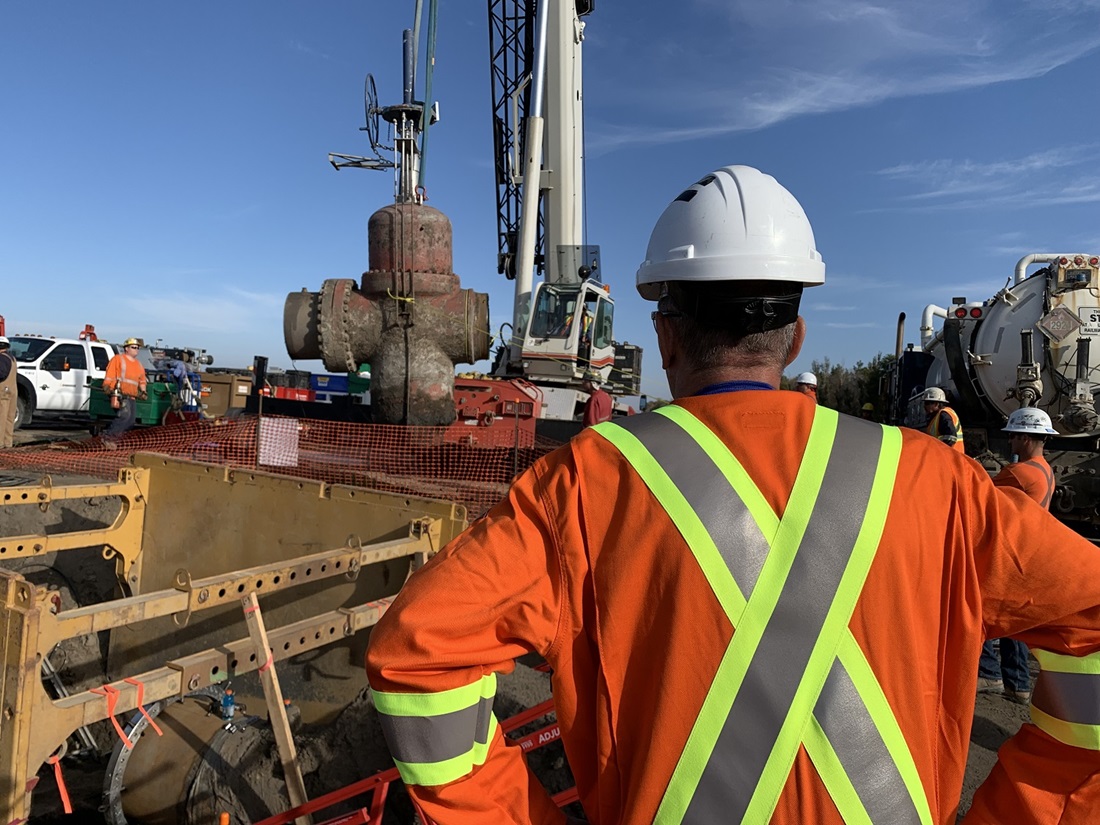
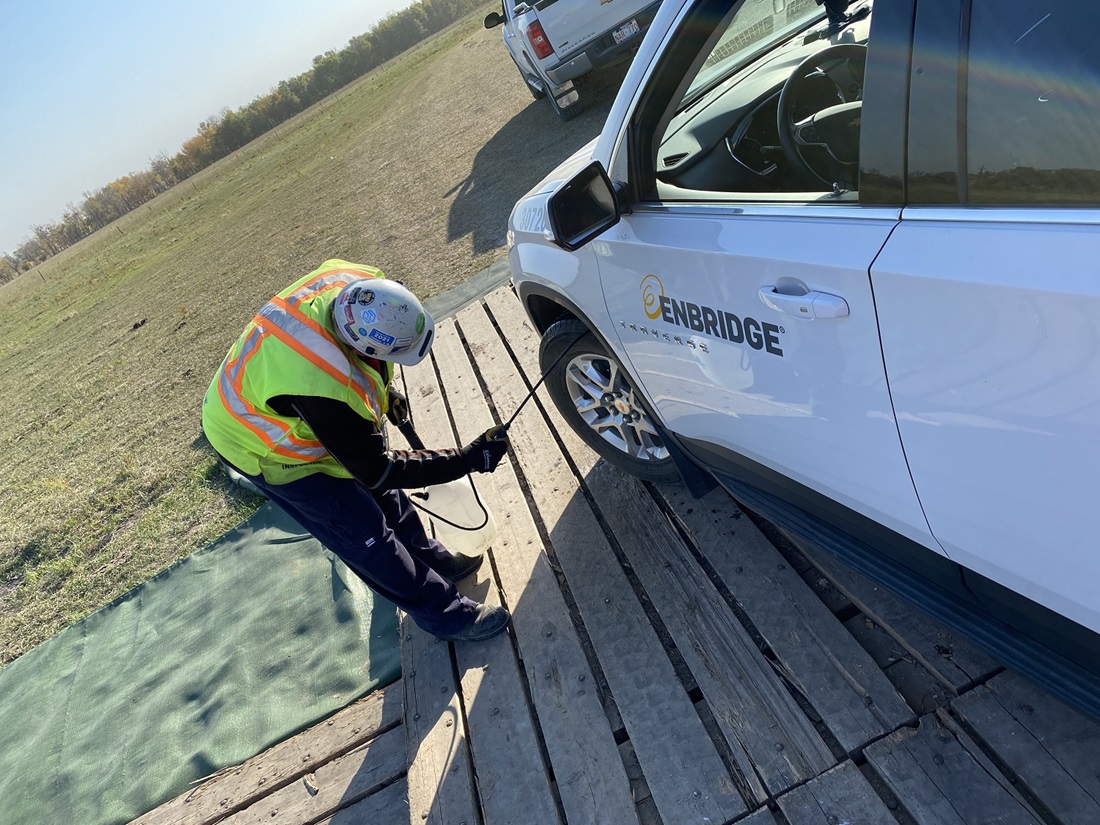
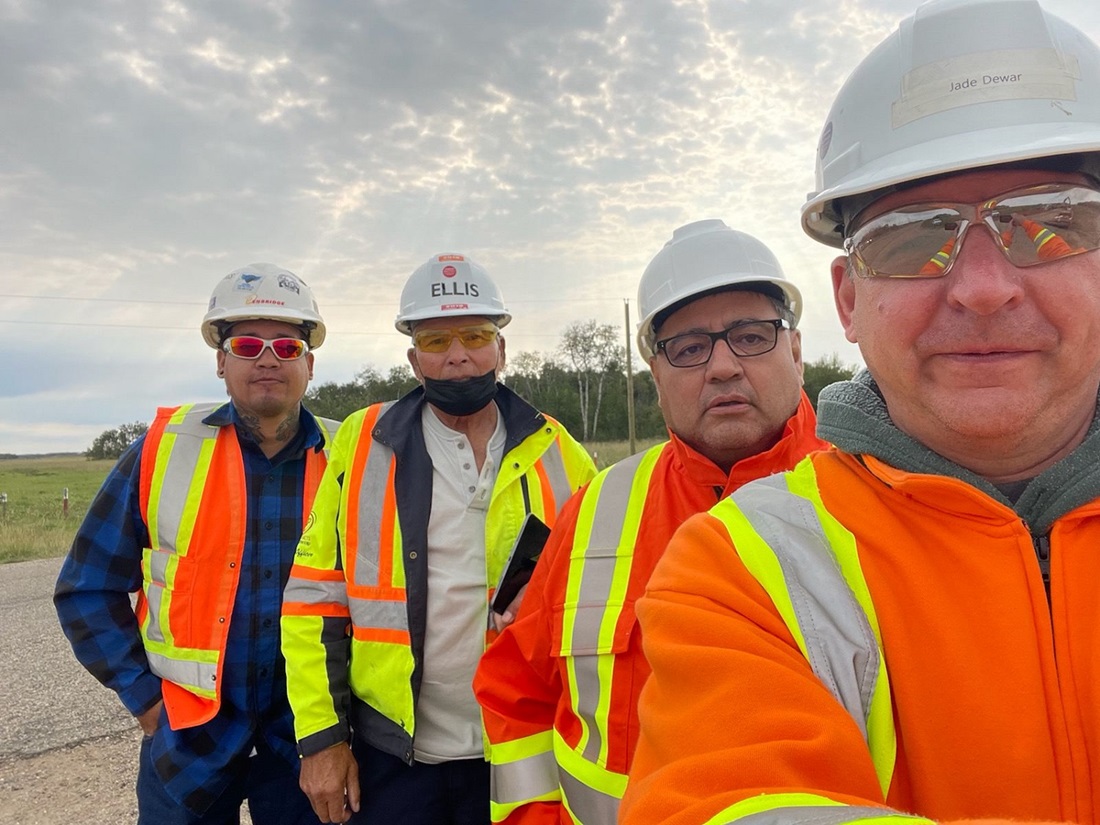
Legacy Line 3 decommissioning: No. 1 of 6
Inspector Sandy Armstrong shows a section of pipe following installation of a steel cap. After the pipe segment is cut, a cap is fabricated onto the ends of the pipe and coated with epoxy. This permanently seals the pipeline at that location and backfill can then be completed.
Legacy Line 3 decommissioning: No. 2 of 6
Once the cap is in place, backfilling of the excavated area begins.
Legacy Line 3 decommissioning: No. 3 of 6
With backfill completed and the topsoil replaced, the land is ready to be returned to its pre-construction state.
Legacy Line 3 decommissioning: No. 4 of 6
A worker looks on during removal of a valve south of Winkler, MB.
Legacy Line 3 decommissioning: No. 5 of 6
Vehicles and equipment were washed and disinfected under a strict biosecurity protocol to prevent the spread of noxious weeds.
Legacy Line 3 decommissioning: No. 6 of 6
Inclusion was an important component of the Manitoba project, with the selection of an Indigenous-owned general contractor and approximately 75% of the decommissioning workforce made up of Indigenous men and women. Pictured from left: Travis Favel (Enbridge); Ellis Cochrane (Peguis First Nation); Dennis Esperance (Enbridge); and Jade Dewar (Manitoba Metis Federation).








